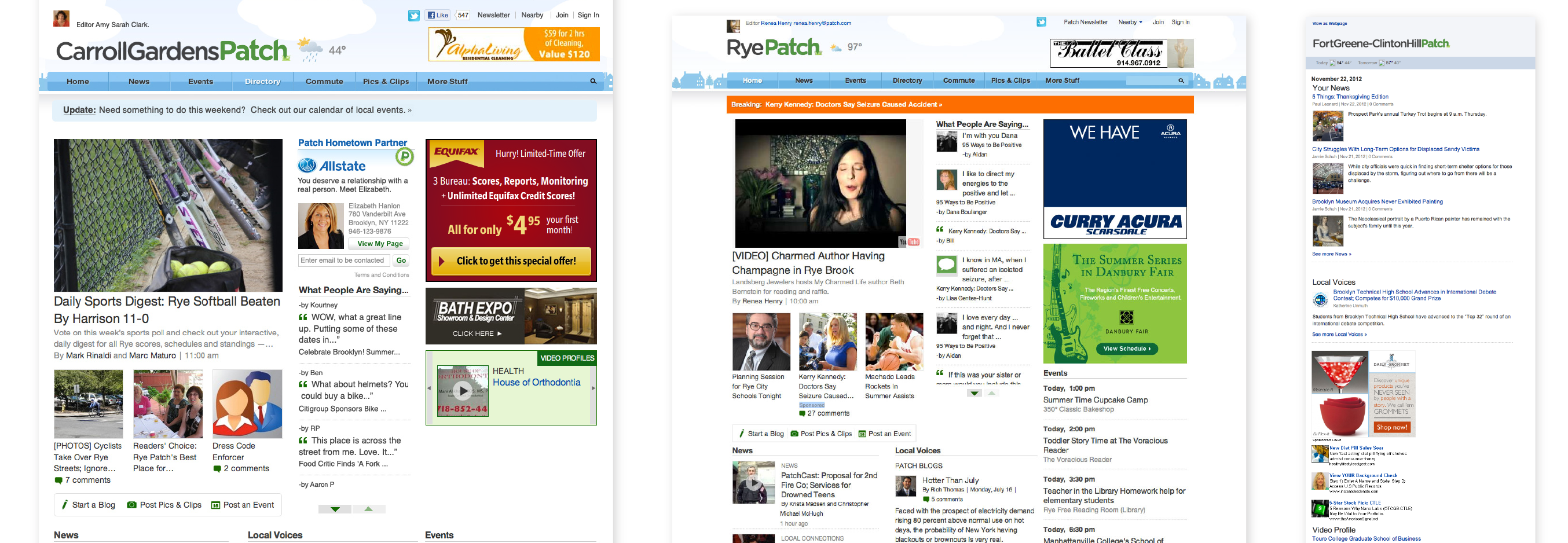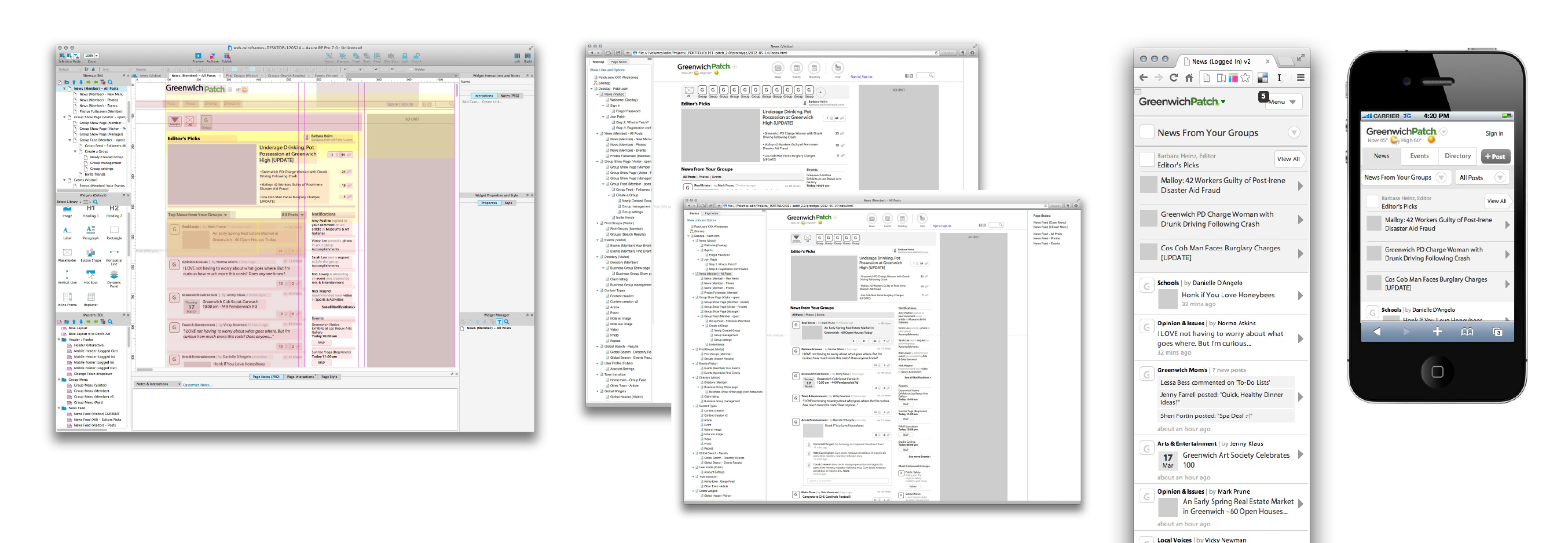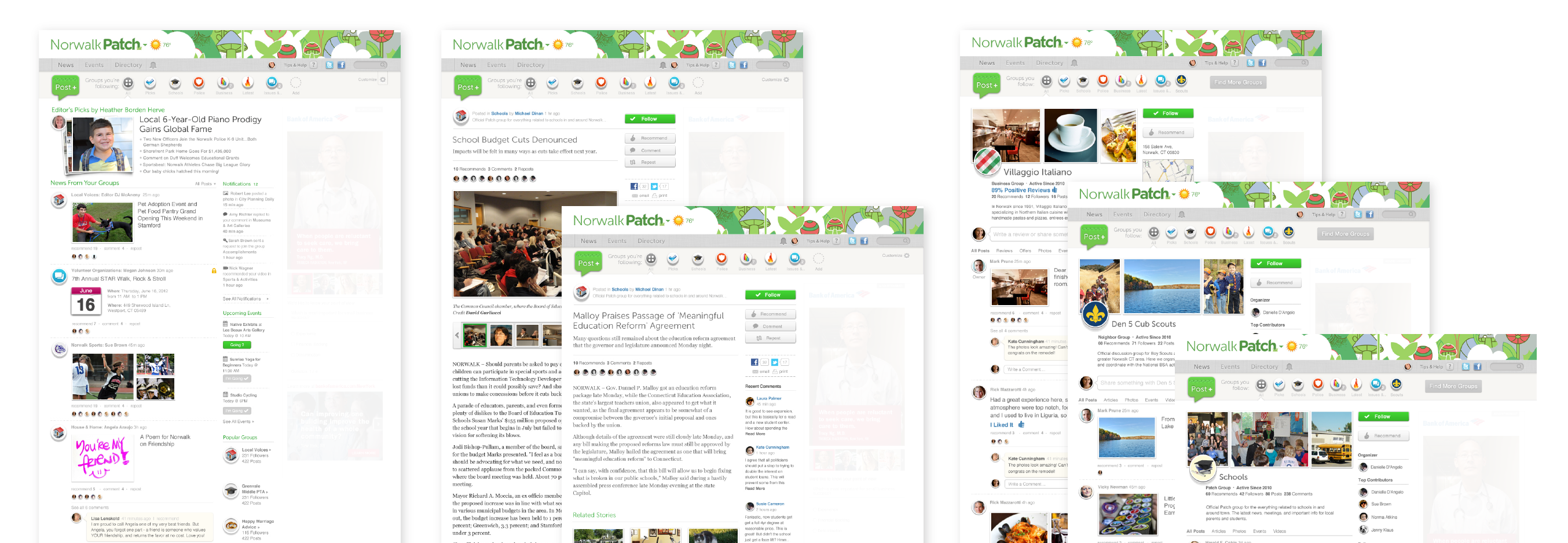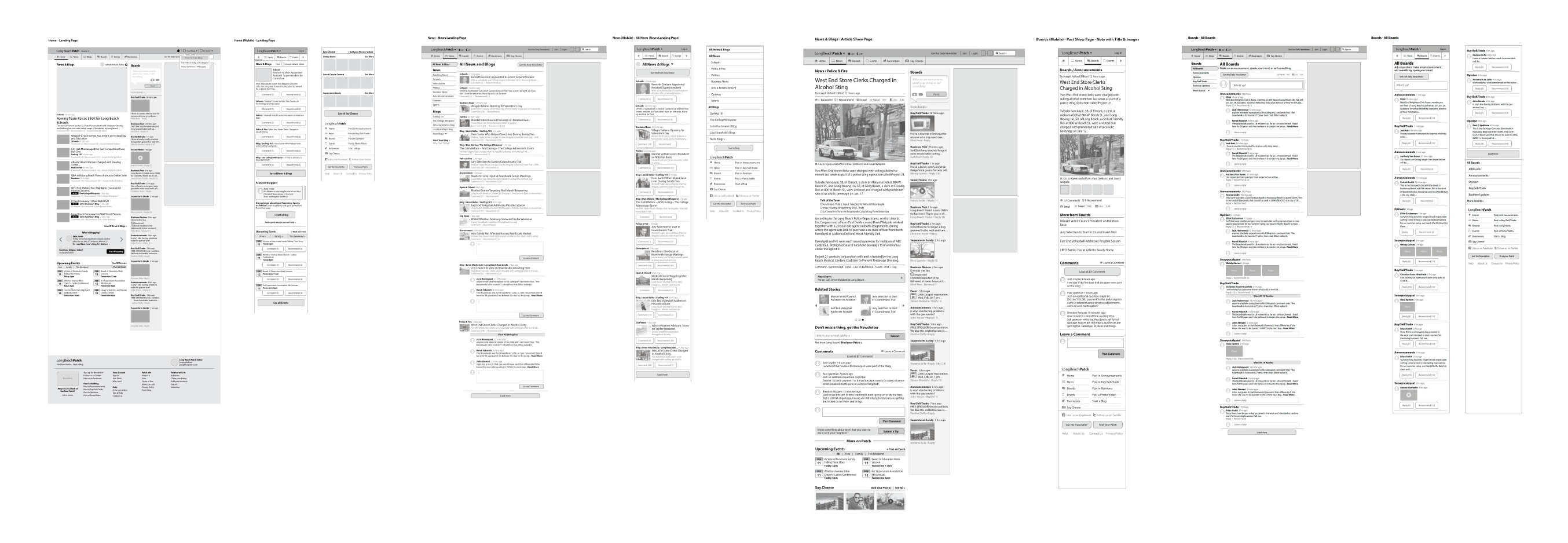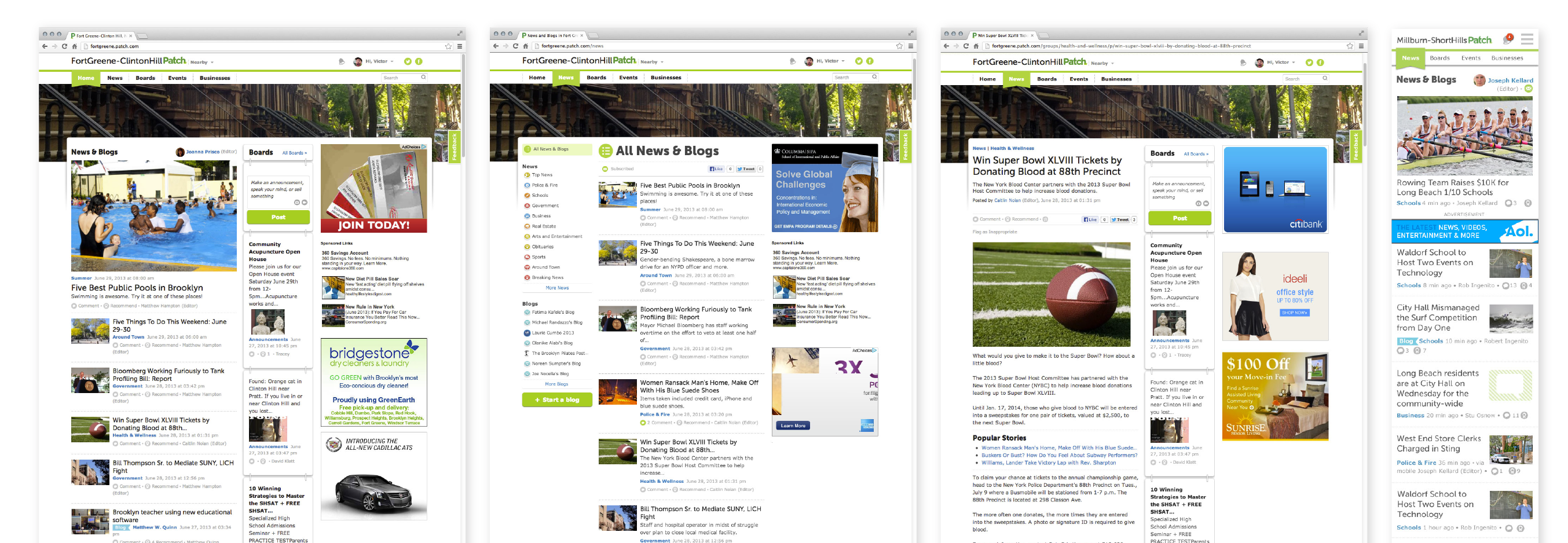
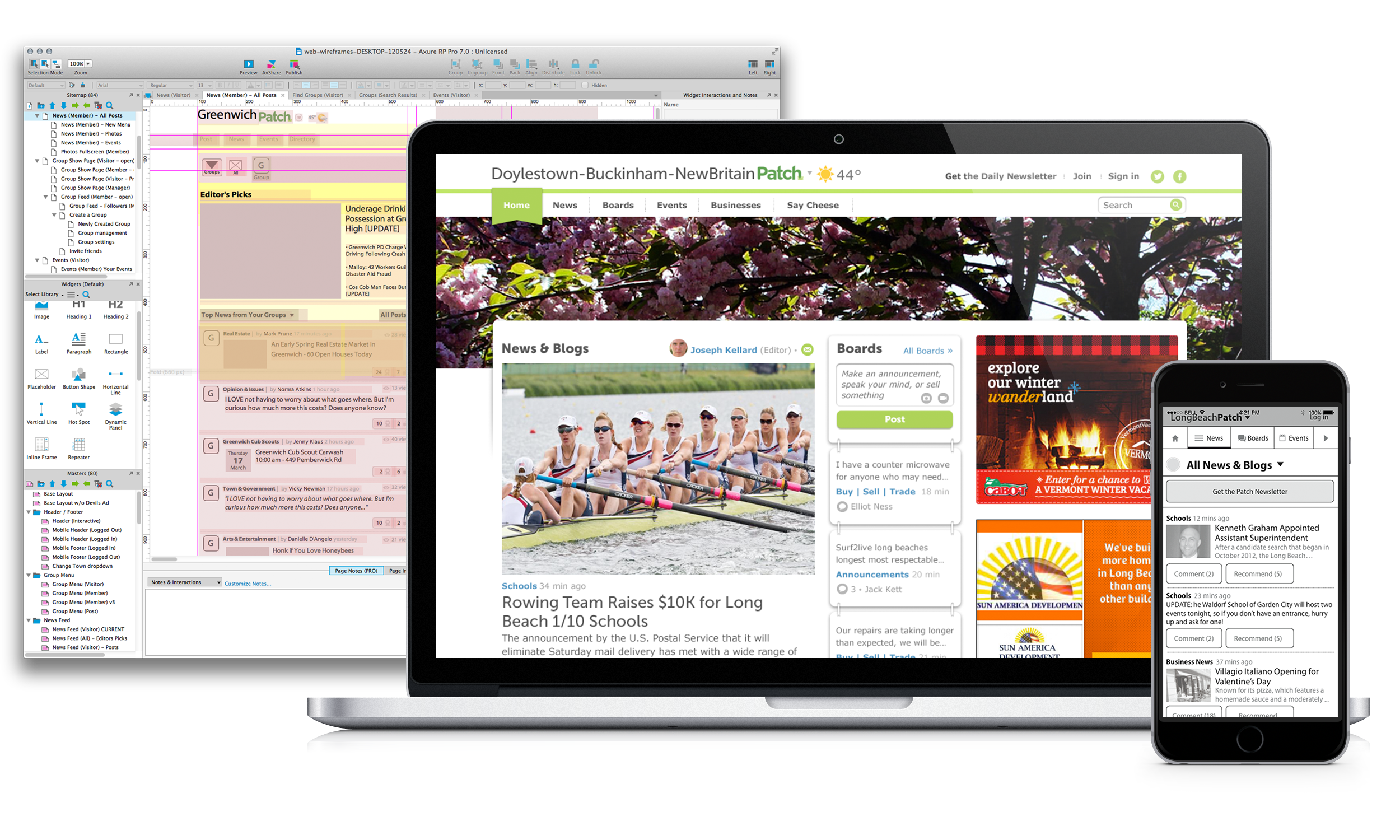
Patch.com 2.0
Redesign of the Patch.com platform, focussed on a community approach
Brief
Redesign of the Patch platform, focussed on a community approach.
We made Patch from an online newspaper to an online community hub. We gave the community a platform where to exchange and communicate with each other, thus empowering them and enhancing the town’s interconnections, communication and social tissue.
Process
After a nationwide ethnographical user research we designed an Alpha Version as a platform of multi-use online groups. Patch users could create their own groups, follow other people’s groups and invite people from town to those groups. It was launched as an “Alpha” release in five towns around Long Island, NY. It was closely followed by user-centred testing and iterative design updates.
Taking into account the learnings from the recently deployed Alpha Version, a Release Version was designed. After several iterations and paired usability testing rounds we presented a simplified system made of editorial-driven news and publicly-open community boards. This way we helped Patch users understand and interact with their town community. It was deployed in all of 900+ Patch towns across the US.
I was integral part of:
User research and constant rounds of usability testing
The strategy by understanding and communicating the impact of the new features on product adoption and impact
The vision and functionality of the product
Leading the UX iterate the product into an Alpha Version design
Understanding the results and learnings from the Alpha Version
Leading the UX to design a Final product incorporating the learnings from the Alpha Version metrics, functionality and usability testings
Results
We made a phenomenal work. In some towns the user engagement went up to 6% (sites like Huffington Post get around 1%), and it grew even in towns previously with small engagement.
